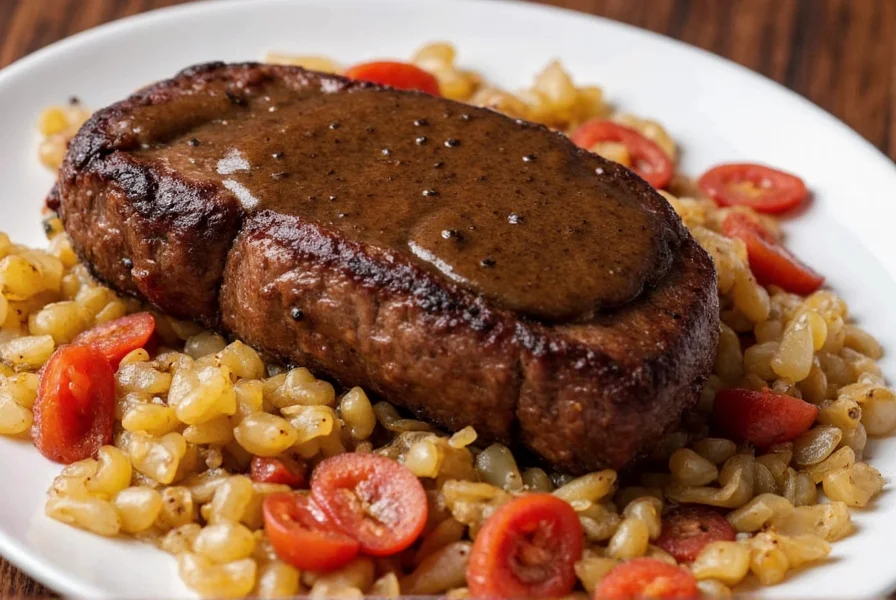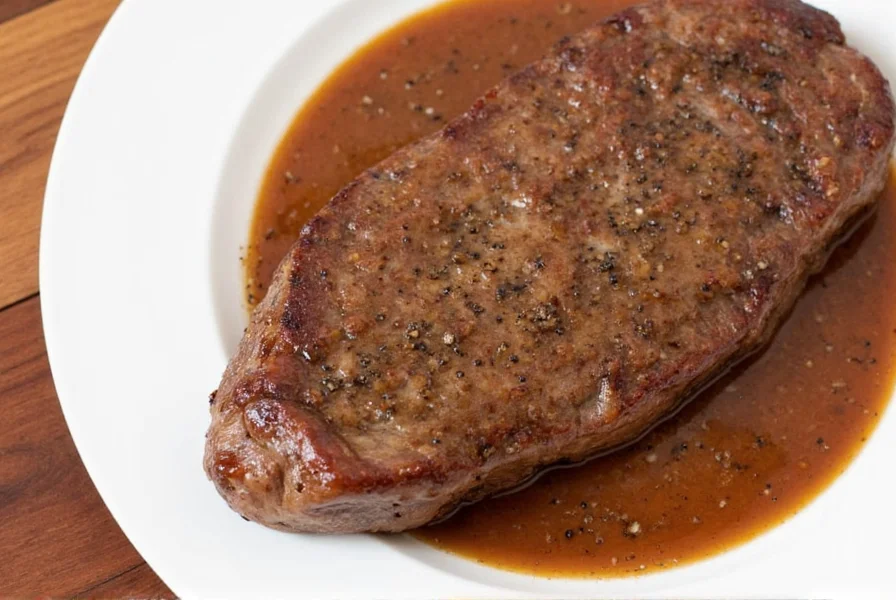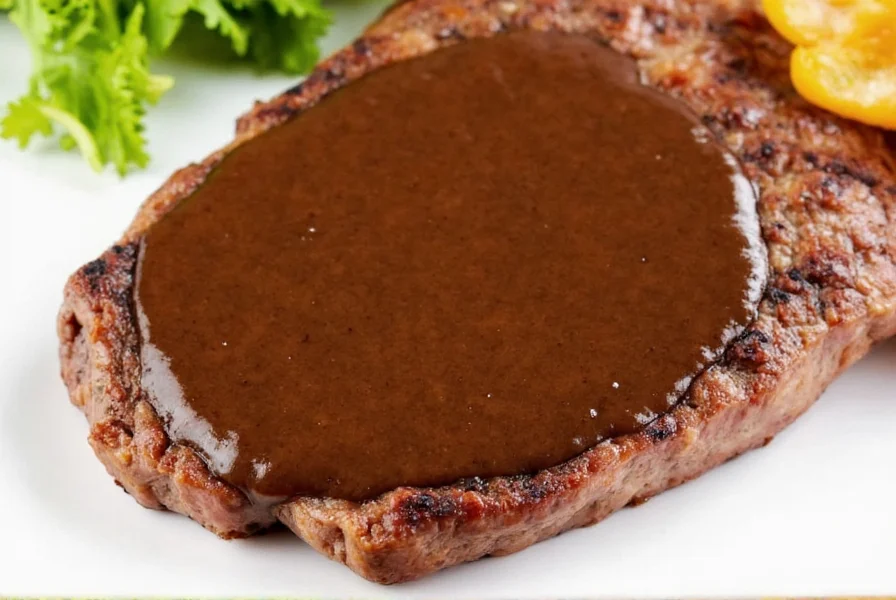Creating the perfect black pepper steak sauce requires understanding both the science and art behind this culinary staple. Unlike pre-made versions that often contain artificial ingredients and excessive sodium, a properly crafted homemade sauce delivers complex flavors through careful ingredient selection and technique. The magic happens when freshly cracked black peppercorns release their essential oils, combining with caramelized shallots and reduced wine to form a glossy, restaurant-quality accompaniment that elevates even modest cuts of beef.
The Essential Components of Authentic Black Pepper Steak Sauce
While variations exist across culinary traditions, the foundation of exceptional black pepper steak sauce remains consistent. The quality of your peppercorns makes the most significant difference—freshly cracked Tellicherry or Madagascar peppercorns provide superior floral notes and balanced heat compared to pre-ground alternatives. These premium peppercorns contain higher concentrations of piperine, the compound responsible for both pepper's distinctive bite and its ability to enhance other flavors.
Professional chefs emphasize the importance of toasting peppercorns before grinding to unlock their full aromatic potential. This simple step transforms ordinary black pepper into a complex spice with citrusy, pine-like undertones that elevate your homemade black pepper steak sauce recipe beyond basic preparations.
Step-by-Step Preparation Guide
Follow this professional technique for restaurant-quality results:
- Toast and grind peppercorns: Heat 2 tablespoons of whole black peppercorns in a dry skillet over medium heat for 2-3 minutes until fragrant. Cool slightly, then coarsely grind.
- Sear your steak: Cook steak to desired doneness, removing it from the pan when nearly finished. Reserve the flavorful fond (browned bits) in the pan.
- Build the sauce base: Add 1 finely diced shallot to the pan, cooking until translucent. Add 2 minced garlic cloves and cook for 30 seconds.
- Flambé (optional): Pour in ¼ cup brandy or cognac, scraping the fond from the bottom of the pan. Allow alcohol to reduce completely.
- Create the reduction: Add 1 cup quality beef broth, 2 tablespoons soy sauce, and the toasted peppercorns. Simmer until reduced by half.
- Finish with butter: Remove from heat and whisk in 2 tablespoons cold butter to create a silky emulsion.
- Rest and serve: Let the sauce rest for 5 minutes before pouring over rested steak.

Perfecting Texture and Consistency
The ideal black pepper steak sauce should coat the back of a spoon without being overly thick. Many home cooks struggle with either watery or gluey textures. The secret lies in proper reduction technique and the final butter addition. When reducing your sauce, maintain a gentle simmer—boiling too vigorously can cause the proteins in the broth to break down, resulting in a cloudy appearance.
For those seeking a gluten-free black pepper steak sauce alternative, simply ensure your beef broth is certified gluten-free and skip any flour-based thickeners. The natural gelatin in quality bone broth often provides sufficient body without additional thickeners.
| Common Issue | Probable Cause | Solution |
|---|---|---|
| Sauce too thin | Insufficient reduction | Continue simmering until proper nappé consistency achieved |
| Sauce too thick | Over-reduction | Gradually add warm broth until desired consistency |
| Bitter flavor | Overcooked garlic or burnt fond | Start over; monitor heat carefully during initial stages |
| Separation | Butter added too quickly or at wrong temperature | Remove from heat, cool slightly, then slowly whisk in cold butter |
Variations for Different Palates
While traditional black pepper steak sauce follows a specific formula, several thoughtful variations can accommodate different dietary needs and flavor preferences:
- Asian-inspired version: Add 1 tablespoon rice vinegar and 1 teaspoon sesame oil for an umami-rich alternative that works particularly well with flank steak
- Mild version for sensitive palates: Toast peppercorns longer to mellow their heat, then use a 50/50 blend of black and white peppercorns
- Smoky variation: Incorporate ½ teaspoon smoked paprika or a few drops of liquid smoke for depth without overwhelming heat
- Dairy-free preparation: Substitute butter with refined coconut oil for similar richness without dairy
When exploring restaurant-style black pepper sauce alternatives, consider how different peppercorn varieties affect the final product. Green peppercorns offer fruitier notes, while Szechuan peppercorns provide a distinctive tingling sensation that complements beef beautifully.
Serving Techniques That Make a Difference
The timing of sauce application significantly impacts your dining experience. Never pour hot sauce directly onto freshly cooked steak—this interrupts the crucial resting period when juices redistribute. Instead, allow your steak to rest for 5-10 minutes after cooking, then warm the sauce separately before serving.
For an elegant presentation that maximizes flavor absorption, slice your steak against the grain and arrange the slices slightly overlapping on the plate. Spoon the warm sauce over the top, allowing it to seep between the meat fibers. This technique ensures each bite delivers optimal flavor without drowning the steak's natural taste.

Storage and Reheating Guidelines
Properly stored, homemade black pepper steak sauce maintains quality for 3-4 days in the refrigerator or up to 3 months in the freezer. When storing, transfer to an airtight container while still warm (not hot) to prevent condensation.
Reheat gently over low temperature, adding a teaspoon of water or broth if the sauce has thickened too much during storage. Avoid boiling, which can cause the emulsion to break. For best results when reheating make-ahead black pepper steak sauce, use a double boiler method to maintain consistent, gentle heat.
Troubleshooting Common Challenges
Even experienced cooks encounter issues with black pepper steak sauce. Understanding these common problems helps you rescue potentially ruined preparations:
- Overpowering pepper heat: Balance with a touch of honey or brown sugar (¼ teaspoon at a time) and additional broth
- Sauce breaks (separates): Create a fresh emulsion by slowly whisking warm sauce into a yolk or mustard base
- Lack of depth: Add a small piece of kombu seaweed during reduction for natural umami enhancement
- Too salty: Dilute with additional unsalted broth and balance with a splash of acid (lemon juice or vinegar)
Conclusion: Mastering the Art of Pepper Steak Sauce
Creating exceptional black pepper steak sauce requires attention to detail but rewards with restaurant-quality results that transform simple steaks into memorable meals. The key lies in understanding how each component contributes to the final flavor profile and mastering the technique of building layers of taste. By selecting quality ingredients, particularly fresh peppercorns, and following proper preparation methods, you'll develop a versatile sauce that elevates your steak preparations consistently.
What's the best type of black pepper for steak sauce?
Tellicherry peppercorns from India offer the ideal balance of complex flavor and moderate heat for steak sauces. Their larger size contains higher concentrations of essential oils that provide floral and citrus notes beyond simple heat. Madagascar peppercorns make an excellent alternative with slightly fruitier characteristics. Always use freshly cracked whole peppercorns rather than pre-ground pepper for maximum flavor impact.
Can I make black pepper steak sauce without alcohol?
Yes, you can create excellent black pepper steak sauce without alcohol. Substitute the brandy or wine with additional beef broth plus 1 tablespoon of balsamic vinegar or apple cider vinegar to maintain the necessary acidity. The key is preserving the balance between richness and brightness that alcohol typically provides in the recipe.
Why does my black pepper sauce become bitter?
Bitterness typically occurs when garlic burns or when peppercorns are overcooked. To prevent this, add garlic during the last 30 seconds of cooking the shallots, and never let it brown. When adding peppercorns, reduce the heat to medium-low to allow their flavors to infuse without becoming acrid. If your sauce does turn bitter, adding a small pinch of sugar can help counteract the bitterness.
How can I thicken black pepper steak sauce without flour?
The most effective flour-free thickening method is proper reduction—simmering the sauce until it naturally concentrates. Quality beef broth contains natural gelatin that thickens as it reduces. For additional body without altering flavor, try blending in a small amount of pureed roasted mushrooms or a teaspoon of tomato paste during the reduction phase. The final addition of cold butter also creates a luxurious, cohesive texture.
What cut of steak works best with black pepper sauce?
Black pepper sauce complements both tender and flavorful cuts. Ribeye and strip steaks provide excellent marbling that pairs beautifully with the sauce's richness. For leaner options, filet mignon works well as the sauce adds necessary flavor complexity. Avoid delicate cuts like flat iron that might be overwhelmed by the sauce's intensity. The key is matching the sauce's robust flavor with steaks that have sufficient fat content and beefy character to stand up to the bold accompaniment.











 浙公网安备
33010002000092号
浙公网安备
33010002000092号 浙B2-20120091-4
浙B2-20120091-4